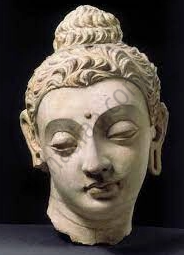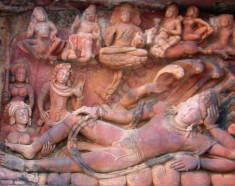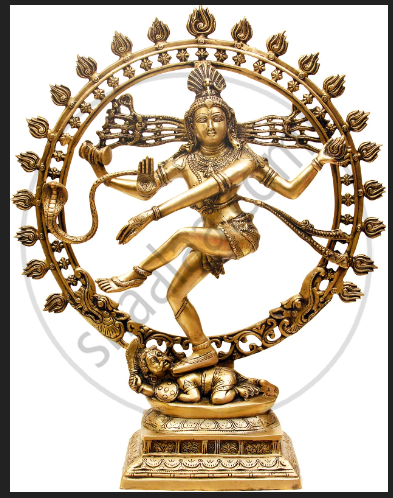Topics
Historiography : Development in the West
History : Applied History
Working of the Constitution
Historiography : Indian Tradition
The Electoral Process
Political Science : Working of the Indian Constitution
Applied History
Political Parties
History of Indian Arts
- What is ‘Art’?
- Indian Traditions of Visual Arts (Drik Kala): Painting
- Prehistoric Paintings
- Mural Paintings and Cave Painting
- Folk Styles of Paintings
- Classical Styles of Painting
- Miniature Paintings in Manuscripts
- Modern Indian Paintings
- Indian Traditions of Visual Arts (Drik Kala): Sculpture Art
- Indus Civilization Sculpture
- Folk Styles of Sculptural Art
- Classical Styles of Sculptural Art
- Indian Iconography
- Indian Traditions of Visual Arts (Drik Kala): Architecture and Sculpture
- Rock-cut Architecture
- Temple Architecture
- Indo-Islamic Architecture
- Indo-Gothic architecture
- Indian Traditions of Performing Arts
- Indian Theatre
- Indian Music
- Indian Dance
- Present Scenario of the Performing Arts
- Art, Applied Art, and Professional Opportunities
Social and Political Movements
- Movement
- Important Movements in India
- Tribal Movement
- Farmers Movement
- Worker's Movements
- Women’s Movement
- Environment Movements
- Consumer Movement
Mass Media and History
Challenges Faced by Indian Democracy
Entertainment and History
Sports and History
Tourism and History
Heritage Management
History - Imperialism
History - 20th Century Age of conflict
History - Emancipation of Asia and Africa
History - World after World War 2
Political Science
Geographical discoveries and colonization
- Concept for Geographical Discoveries and Colonization
Africa
- Imperialism - Africa
Asia: India, China, Japan
- Concept for Asia: India, China, Japan
Dictatorships in Europe, Second World War and world
- Concept on Dictatorships in Europe
- Concept for Second World War and World
First world war
- Concept on First World War
The League of Nations
- Concept for the League of Nations
Russian Revolution
- Concept for Russian Revolution
United Nations Organization
- Concept for United Nations Organization
Africa
- Emancipation of Africa
Asia
- Emancipation of Asia
Globalization
- Globalization After World War II
Scientific and Technological Progress
- Scientific and Technological Progress After World War II
Cold war
- Formation of the Cold War
Social Diversity and Democracy
- Social Diversity
- Coccept for Caste/Race and Democracy
- Concept for Language and Democracy
- Cocnept for Religion and Democracy
- Concept for Gender and Democracy
- Concept for Democracy and Diversity
Challenges to Democracy Remedial Measures to the Challenges
- Concept for Challenges to Democracy Remedial Measures to the Challenges
Internal work
Democracy
- Democracy - Meaning, Types and Characteristics
Political Parties and Types
- Political Parties
- Importance of Political Parties
- Major National and Regional Parties in India/ Types of Political Parties
Notes
Indian Iconography:
- Iconography is the use of images and symbols to portray a subject, movement, or ideal.
- Iconography is a subfield of art history that focuses on the identification of images based on particular symbols and myths attached to them, including the study of representations of deities. The deity's underlying story and meaning may endure for many centuries, but its particular application at a location may be a reaction to that location's current social, political, or geographic context.
- Every region and period produced its own distinct style of images with its regional variations in iconography.
1. Gandhara School of Sculpture:
- From 50 B.C. to 500 A.D., the Gandhara School saw two periods of prosperity.
- The Gandhara school of Art developed in the western frontiers of Punjab, near modern-day Peshawar and Afghanistan in the second century B.C.E.
- The Hellenistic realism of the Gandharan Buddha figure was influenced by Persian, Scythian, and Parthian models.
- The Gandhara school's artwork was predominantly Mahayana and exhibited Greco-Roman elements.
- It flourished in the country's northwestern frontier during the Kushan dynasty.
- Buddha in the symbolic form got a human form in Gandhara.
- Jalalabad, Hadda, Bamaran, Begram & Taxila were the main centers where art pieces of Gandhara School were found.
- They made use of Mud, Lime, and Stucco.

Bamyan Buddha of Afghanistan

Buddha head from Taxila
2. Mathura School of Sculpture:
- The Mathura School of Art came into existence during the Kushana period emperor Kanishka, which runs from the first through the third centuries CE.
- Indian iconography was built on the foundations laid by the Mathura school.
- Mathura served as the primary traditional center of production, with Sarnath and Kosambi serving as secondary centers.
- Spotted sandstone was the preferred medium for sculpture depiction.
- The traditions of the Mathura School of Sculpture had an outside influence.
- The religious zeal of Brahmanism, Jainism, and Buddhism is reflected in the Mathura school's figures of Buddha, Bodhisattvas, Vishnu, Shiva, Yakshas, Yakshinis, Jinas, etc., which symbolize the school's vibrancy and assimilative character.
- The Kushana kings made use of images of various deities on their coins.

Seated Buddha, Sarnath
3. Gupta Sculpture:
- The Gupta era saw the development of iconographic principles and the establishment of sculptural aesthetic standards - anything that has never before been achieved.
- The Gupta era is also considered “The Golden Age of Indian Art”.
- The focal point of Gupta's sculpture is the human figure, taken as the picture. A new aesthetic ideal emerges as a result of the evolution of a new canon of beauty.
- This ideal is founded on a clear comprehension of the human body in all its natural suppleness and softness.
- The Gupta sculpture's smooth, shiny body, which is flexible and stretchy, allows for unrestricted movement.
- Gupta sculptures are distinguished by ornate clothing, jewellery, etc.
- A great example is the enormous panel of Sheshashayi Vishnufrom the Deogarh temple, which depicts the Supreme being dozing off on the serpent Ananta, the emblem of eternity, between the universe's disintegration and its new creation.

Sheshashayana Vishnu, Dashavatara temple, Deogarh
4. Cholas Sculpture:
- During this period, art reached the pinnacle of development.
- Sculptors of this era are known for their elegance, sensitive modeling, and balanced tension.
- Under the guidance of Chola kings during the 9th and 13th centuries, the art of creating bronze sculptures was established. During this time, bronze statues of deities such Siva-Parvati, Nataraj, Lakshmi, Vishnu, etc. were created.

Nataraja, Chola period
- Shiva is shown in this Chola period bronze sculpture balancing himself on his right leg and suppressing the apasmara, the demon of ignorance or forgetfulness, with the foot of the same leg.
- Simultaneously, he raises his left leg in bhujangatrasita stance, representing tirobhava, that is, kicking away the veil of maya or illusion from the devotee's mind.
- His four arms are outstretched, and his main right hand is posed in Abhaya hasta, or the gesture suggesting. The upper right holds the damaru, his favorite musical instrument, to keep the beat tala.
- The upper left hand holds a flame, while the main left hand is held in dola hasta and connects with the right hand's Abhaya hasta.
- His hair flies on both sides, touching the circular jvala mala, or flame garland, that surrounds the entire dancing figuration.
If you would like to contribute notes or other learning material, please submit them using the button below.
